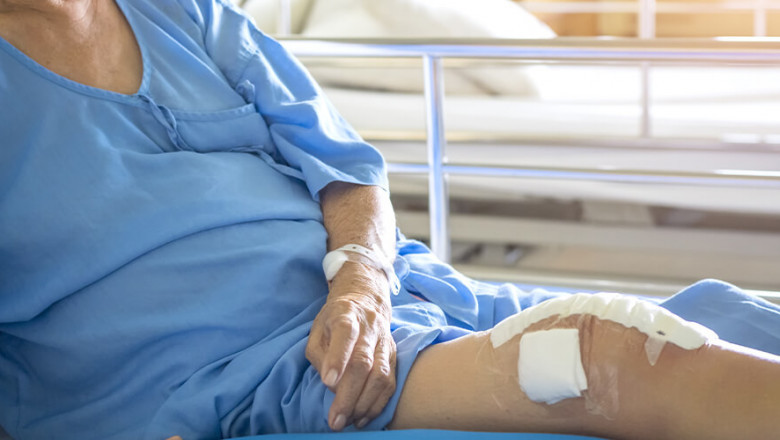views

Rehabilitation is known to be one of the most integral aspects that aids in total joint replacement recovery.
A proper course of rehab plays a significant role in gaining exclusive benefits of the surgery. After the patients have undergone surgery, they will usually spend about 3 to 5 days in the hospitals.
Most of the patients will focus on starting the rehab while they are in the hospital. After they are discharged from the hospital, they will undergo in-patient therapy at a rehab center and outpatient therapy while staying at home.
They can also opt for physical therapy treatment to get faster recovery.
Importance Of Rehabilitation
-
Regaining Your Lost Mobility And Strength
Going for rehab therapy will aid in your total joint replacement recovery. After a joint replacement, it becomes imperative to exercise as it helps to regain your range of motion and strength.
Most of the patients start to stand and walk with the help of a walker only within hours after the surgical procedure.
So, your physical therapy rehab program will specifically start with gentle exercises. All of these exercises are designated in such a manner so that they can bear your weight on your new joint.
By performing, range of motion exercises specifically after surgery, you would be able to prevent scar tissue from restricting your new joint flexibility.
Your physical therapist will also teach you the best ways to manage pain after surgery. Some amount of pain is very normal after a knee replacement surgery.
Most of the rehab programs for knee replacements involve gait training, quadriceps strengthening, range of motion exercises, and daily life training exercises.
During your recovery stage, you should refrain from overworking or straining the knee. Healing is promoted with time, and so you should not try to rush your rehab.
-
Making Progress
With the advancement in your rehabilitation, you can start resuming your day-to-day activities. At this stage, you can switch from a walker to a cane. Eventually, you will not even require a cane and can start walking on your own.
It is the time when you will gain the ability to climb stairs too. Many of the patients begin first with smaller-height steps and later progress to stairs of standard height.
When you regain the ability to safely get out of your bed, walk, go to the bathroom on your own, etc., you can return to your home.
But, your physical therapy sessions will continue when you have returned home. Your physical therapist will consider visiting your home at least once to ensure that you can get around safely.
After your home visits have ended, you will have to start with outpatient physical therapy.
Specifically, during your outpatient physical therapy session, your therapist may recommend using ice or heat treatments. In some cases, electrical stimulation is used.
All of these treatment approaches play a significant role in reducing any persistent pain or swelling. While you are at your home, you will have to stick with using your crutches or walker.
Your physical therapist will guide you on increasing the amount of weight you put on your new knee joint as it heals.
Additionally, they will guide you through a comprehensive exercise program that includes balance, strengthening, range of motion, and endurance exercises.
It also includes functional activities. With the progression of your therapy, you will get to learn some other exercises which will help you with your regular activities.
Some of the best examples are squatting, bending over, and going up and down steps. Your therapist can also teach you specific exercises which will help you carry out your work safely.
-
Getting Back To Your Day-To-Day Activities
About six weeks after surgery, you will get permission to drive. But, to perform this, you will need to move your legs quickly. Here comes the role of daily exercises. After you can drive, the subsequent step is to get back to work.
Both your doctor and therapist will assist you in determining the best time to return to work. It will also be dependent on your work type and its demand.
If your job requires any manual labor like heavy lifting or similar work, it is better to discuss this with your therapist and doctor. They will help you to make an effective decision.
You will have to keep in mind that certain sports and leisure activities could damage your artificial knee over time. So, you will have to be very careful in this aspect.
Final Verdict
Remember that your rehab therapy is an integral part of your total joint replacement recovery.
Your hard work, specifically during this stage, will keep your recovery on track. So, it allows you to enjoy all the essential benefits provided by knee replacement surgery.












